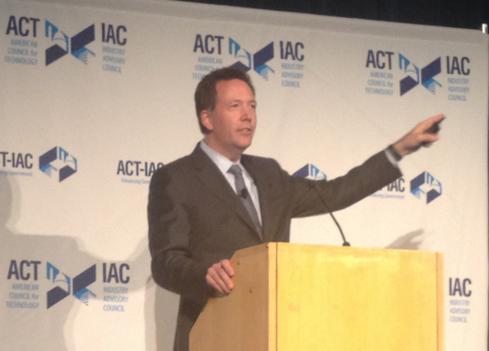Federal CIO: Don't Let 'Sunk Costs' Deter Innovation
Fed IT chief Steven VanRoekel urges leaders to abandon big-project thinking and spur a culture of innovation in the face of flat IT budgets.


6 Cool Apps From Uncle Sam
6 Cool Apps From Uncle Sam (Click image for larger view and slideshow.)
Federal CIO Steven VanRoekel sounded more like the administration's chief innovation officer than its CIO at a government technology event Feb. 6., offering few clues to where the administration's tech policies are heading next.
The US government's top IT official has made few public appearances in recent months, a fact he attributed to temporarily serving in "three Senate-confirmed jobs at once" as fed CIO, administrator of the Office of E-Government and Information Technology, and acting deputy director for management at the Office of Management and Budget.
In his first public appearance since returning full-time to his CIO duties, VanRoekel said he has "spent a lot of time over the last few months" helping the administration formulate its fiscal year 2015 budget. But he declined to elaborate on what the president plans to present to Congress, or on his office's plans, except to say "the prevailing theme throughout the budget is tech and innovation -- it's part of everything we do -- and to drive its impact [on a large] scale."
VanRoekel hinted that the fiscal 2015 federal IT budget will remain in line with recent budgets, at about $82 billion, according to the last available figure for FY 2014. Too many federal officials think that to do more you have to spend more, but the opposite can be true, he said, noting that federal budget cutbacks have demonstrated that constraints can lead to more creative approaches.
[Administration officials examine public concerns on IT. Read: White House Launches Big Data, Privacy Review.]
"We have a modest tech budget compared to the [total] federal budget, but we are moving a sector of the economy through our actions, and... moving the world," VanRoekel said, referring to the administration's efforts to get agencies to adopt cloud computing, embrace open data standards, and improve IT security.
VanRoekel's remarks were part of a half-day event called "Igniting Innovation," sponsored by the Institute for Innovation, a unit of trade group ACT-IAC. The event showcased 30 innovative public service projects enabled by IT. Among the organizations and projects that received awards:
The Environmental Protection Agency for its How's My Waterway app, a map-based tool for citizens to determine the water conditions and pollution concerns for almost every body of water in the US. The EPA earned high marks for taking highly technical scientific data and translating it into a service that benefits local consumers.
The Department of Veterans Affairs and Agilex Technologies, which developed an iPad app that lets VA caregivers securely access and share the personal health information of veterans with VA care teams.
The Federal Emergency Management Agency, whose Integrated Public Alert and Warning System uses wireless cellular technology to broadcast emergency messages without adding to cellular network congestion during emergencies.
These types of innovations, VanRoekel suggested, are what happens when agencies and companies focus on delivering services from the customer's point of view.
VanRoekel spoke about the innovation lessons he says he learned while at Microsoft and the FCC. "It's all about culture," getting "all hands on deck," and being willing to break the entropy that prevents organizations from changing with the times, he said.
Too often in government, "big ideas lead to big RFPs, which lead to big vendors and to big contracts" -- and eventually to big failures. "It's unsustainable," said VanRoekel, who encouraged IT leaders to work with colleagues, customers, and vendors on more bite-sized projects.
VanRoekel also cautioned against allowing "sunk costs or sunk culture to define your forward path." He credited an FCC staffer for making the distinction between "red laws and blue laws" -- those laws that are required by statute versus rules that employees follow out of habit.
Leaders need to put walls around legacy investments if they're to begin moving forward with new approaches, he said. At the same time, he added, IT departments must "nail the basics" -- manage a single email system rather than a dozen of them, for example -- and they must involve their employees to sustain changes.
Finally, he urged, don't let IT tactics drive your strategies: "Have your strategies define the outcome you want, and work backwards."
Find out how a government program is putting cloud computing on the fast track to better security. Also in the Cloud Security issue of InformationWeek Government: Defense CIO Teri Takai on why FedRAMP helps everyone.
About the Author(s)
You May Also Like
How to Amplify DevOps with DevSecOps
May 22, 2024Generative AI: Use Cases and Risks in 2024
May 29, 2024Smart Service Management
June 4, 2024







